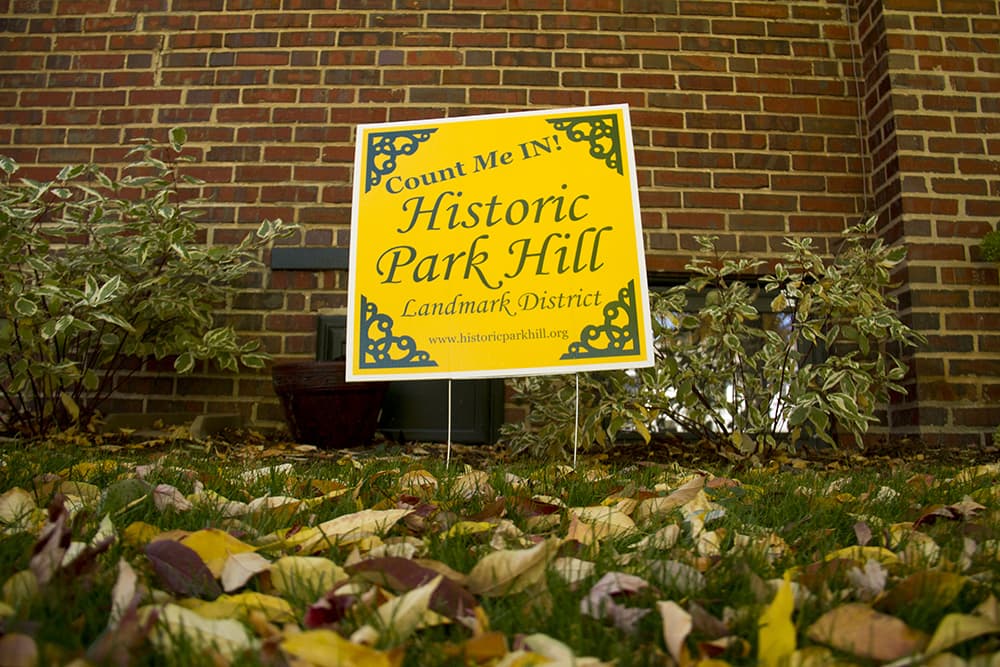For years, researchers from the University of Colorado have been conducting research in the Northeast Park Hill and Montbello neighborhoods to better understand the causes of systemic youth violence.
The goal is to develop best practices for reducing violence in similar neighborhoods elsewhere.
Both neighborhoods have higher rates of economic hardship and youth violence than the United States average. In 2014, Northeast Park Hill was home to more violent crimes by young people than the national average -- 2.5 times as many, according data provided by the university. The stats include the total amount of violent crime in the area committed by those ranging in age from 10-24, adjusted for population. The categories making up the total violent crime number included violent crime, homicide and aggravated assault.
The numbers are just a starting point, though. Beverly Kingston, director and senior research associate for the Center for the Study and Prevention of Violence at the University of Colorado, says she wants to avoid falling into the trap of "naming problems but not naming solutions."
"Our center is very much about bridging the gap between research and practice, and practice and research," Kingston said.
There are a lot of gaps to bridge, it turns out.
That's what an organization called Park Hill Strong is hoping to do by fostering collaboration between nonprofits already doing work in those areas. It's following the model of Steps to Success in Montebello because they're both part of the same work from the Center for Disease Control.
In 2011, the CDC began conducting research in the Denver area. Montbello was chosen from a list of seven possible neighborhoods as the active test site, while Park Hill was designated as a control site. In Montbello, they enacted intervention efforts to reduce youth violence. They measured change there against data from Park Hill to see if their efforts were effective.
"I feel really hopeful about what is happening in Park Hill," Kingston said.
After five years of research in Denver, the CDC issued a matching grant in 2016 for the project for an additional five years of funding -- and Park Hill became an active site for intervention. That's when Park Hill Strong started.
"Prior to this work, a lot of organizations were working in silos. So everybody came together to create a network for a thriving environment for children," Heidi Grove, the impact director for Park Hill Strong, said.
Residents have been skeptical of the researchers' intents.
Kingston said in the initial phases of their research the Montbello residents immediately made her aware of their concerns. "We think this is going to be hit and run research," they told Kingston as she explained the process during a community meeting early on. She says that phrasing has stuck with her as they've continued this research over the last seven years.
"All I could promise is, we don't want to be that. Partly why that happens is there's not good infrastructure oftentimes between university and community. That's why it can feel like 'you just got this grant, you're coming and doing this and leave,'" Kingston said.
Kingston said the concerns expressed by the residents of Montbello didn't come out of nowhere.
"The science can have the bias of privilege in it and sometimes we as researchers are perpetuating it without even knowing," King said. "Lots of times we fund things as a nation that aren't effective. You can look at Scared Straight, for example. That's still going but can be harmful."
She says one way they're trying to address those critiques of this type of research is by reaffirming that community needs are the driver of this project. She says the data they collect should be best used as a tool for community members to understand the conditions in the neighborhood, and can help inform next steps for stakeholders in the area.
"We like to provide them with data, their data," Kingston said. "We're constantly doing surveys, talking to people, helping give the community back a systematic picture of what's going on so they can then see what they can prioritize."
She understands that it is difficult to build trust in these scenarios as funding is precarious and time limited, while residents have to continue to live in the wake of well intentioned programs gone awry well after the researchers pack up and leave. However, she is hopeful that will not be the case for this venture into curbing youth violence.
The CDC has a long-term plan to reduce youth violence.
According to David Bechhoefer, project director for Steps to Success, much of the work is focused on prevention, and results will not be observable in the data collected in the immediate future. They aren't able to say much about the impact they've had in Montbello over the last several years, but have seen positive feedback in exit surveys taken by families involved in their programs. Grove says they can start to make similar anecdotal conclusions, that their work has been beneficial in the Park Hill neighborhood, after just two years.
"From an anecdotal perspective, the silos are starting to break down and people are starting to talk to each other," Grove says.
For example, Park Hill Strong is working within the larger framework of the Park Hill Collective Impact.
Grove says she met with the organization's executive director, James Roy II, early on in the process and concluded that their functions were so aligned that Park Hill Strong could be incorporated into the collective. It also presented an opportunity for "leveraging the Center for Disease Control dollars" in a way that would allow the CDC to conduct their research and have the additional benefits of the neighborhood reach of the collaborative.
"The framework of collective impact is really about solving the situation that too many organizations are working in silos," Roy said.
The collaborative works with more than 45 organizations, from nonprofits to schools to private businesses, Roy said, with the idea that children's lives need to be looked at holistically.
Juvenile justice is one of six impact areas the group focuses on in its efforts to help local children thrive -- that's where Park Hill Strong fits in.
Roy said they're using data to fuel their decisions about how to best engage with the needs of the community, which fits in with the style of one of their major funders, Bloomberg Philanthropies.
"We're collecting data from public sources we also have partnerships," Roy said.
Grove said having all of these organizations work together will serve to have "wrap-around impact on kids in Park Hill"
"What's missed is if kids are getting exposed to social-emotional learning at school, and they go home they're not getting the reinforcement," Grove said.
In an effort to develop more grassroots support and focus on the needs of the community, the collective issues mini-grants to fund work that benefits their respective communities.
Roy said the collective will start having small group conversations of 8-12 people throughout the neighborhood to get a better feel for the needs of the neighborhood.














